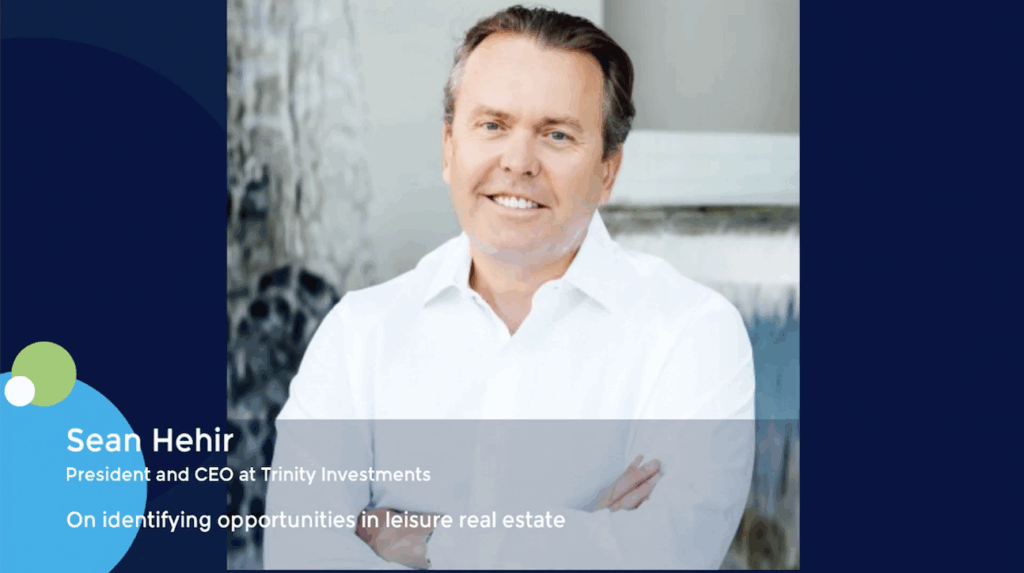Private markets fundraisers set their sights on Japanese private wealth
Ed Huang, a senior managing director and head of Asia-Pacific private wealth at Blackstone, doesn’t hold back when discussing the barely realised opportunity in selling private markets products to Japan’s high net worth (HNW) population.
“We look at Japan as having the potential to become the second-largest market in the world for private wealth. There is USD 23trn of household assets and over 50% of that is in cash. Alternatives penetration is less than 1%,” he said. “What we are seeing is a revitalisation of Japan, a shift from savings to investment, and much more of a focus on returns. That’s what creates the opportunity.”
Huang, like most of his peers, acknowledges that the market is still nascent. Blackstone was among the first to bring evergreen products to Japan, starting with real estate and private credit, and that was only within the last four years. A dedicated private equity product arrived in 2024. Nevertheless, everyone is preparing for an impending growth spurt.
Global sponsors have different approaches in terms of boots on the ground – whether they need low-double-digit headcount to oversee partnerships with local distributors or something more substantial – but most are actively recruiting in Tokyo. Carlyle, Blue Owl, and Apollo Global Management are among those that have made senior local hires in the past 12 months.
EQT has nearly 100 professionals in private wealth globally and Japan represents the largest portion of the approximately 15-strong Asia team. Sueann Yeo, a managing director and head of Asia Pacific private wealth client relations and capital raising at EQT, described Japan as “my biggest target for the year” in terms of business development. It will receive the largest portion of her regional budget.
Others declined to give region-wide or Japan numbers. According to Huang, Blackstone’s Japan team is its largest and fastest-growing in Asia. He aims to expand local headcount by at least 50% over the coming year.
Japan was home to 2.8m US dollar millionaires in 2023, ranking second in Asia and fifth globally. UBS expects the country to register faster growth than any of the nations above it through 2028, hitting 3.6m, which will be good enough for third place globally, behind the US and mainland China.
As a booking centre for private wealth, Japan has yet to surpass Hong Kong and Singapore, which serve as regional entrepots. Indeed, the gap might be larger than local numbers suggest: Global private banks are responsible for a lot of the money raised via Hong Kong and Singapore, and it is estimated that a sizeable portion of Asian business is still booked in Switzerland.
However, Shane Clifford, a partner and head of global wealth at Carlyle, believes Japan could rise to the top within three years. In the last two years alone, he has seen a significant uptick in the amounts that can be raised through local distribution platforms. Regulation is a contributing factor.
“At various points in my career we’ve spoken about Japan opening to alternatives from a wealth perspective. It didn’t happen because, from a regulatory perspective, they weren’t there. What we see now is the FSA [Financial Services Agency] being much more willing to work with the asset management industry and begin to offer appropriate private markets vehicles to the wealth channel.”
Product development
Public offerings represent a key breakthrough. Previously, sponsors reached qualified investors through private placement channels, which limit distribution to 49 participants per share class over a three-month period with individual positions capped at USD 1m. Public offerings can be distributed more broadly, and most products have a minimum commitment size of USD 50,000.
Blackstone made a splash last year by raising USD 1.2bn in four months through a public offering of its private equity evergreen product, which is structured as a Cayman Islands-domiciled unit trust. This follows similar offerings for BREIT and BCRED, its evergreen real estate and credit strategies. Other sponsors to have gone down this route include Brookfield Asset Management and Goldman Sachs.
More are imminent, with EQT filing in mid-May and set to receive its first inflows in July. “A public offering allows you to reach a wider base of clients, but it requires a lot more effort on the compliance side. Not everyone is doing this,” said EQT’s Yeo.
Other industry participants describe a system that remains a work in progress. While the European and US markets are seen as prescriptive and organised – participants appreciate the nuances of choosing a European Long-Term Investment Fund (ELTIF), regulated investment company (RIC) or interval fund structures – Japan’s rules are still being figured out.
Developments are coming thick and fast. A few sponsors have distributed products – unencumbered by standard private placement limitations – through the J-Ships (JSDA Shares & Investment Trusts for Professionals) programme, introduced by the Japan Securities Dealer Association to facilitate the circulation of unlisted stocks. It is much like accredited investor schemes seen in other markets.
More recently, public offerings have moved onshore, with Nomura Asset Management packaging a Macquarie Asset Management private infrastructure fund as a Japan unit trust. Launched in February, it has a current net asset value (NAV) of approximately JPY 84.5bn (USD 586m). Daiwa Asset Management has filed to do the same for BCRED.
The maximum illiquid exposure for onshore mutual funds increased to 15% last year, but on the proviso that products demonstrate price transparency. It was uncertain whether disclosing monthly NAV would be sufficiently transparent, according to Tim Lee, a managing director and head of business management and operations for APAC at iCapital. Nevertheless, Nomura persevered.
“Now market leaders have done it, you will see others get more comfortable. This won’t necessarily be the main distribution channel, but it’s an additional option,” Lee said. “These structures are used to launch standard mutual funds. All Japanese securities firms are familiar with them.”
For iCapital, there is opportunity on both sides – serving financial sponsors that want to tailor products for the Japanese market and local platforms looking to distribute alternatives to HNW clients. For the latter, assimilation takes time. They must consider due diligence processes, internal systems for processing and tracking subscriptions, and in the case of open-ended vehicles, managing redemptions.
In addition to advising on operational aspects, the firm receives enquiries from distributors on general best practice: for example, what protocols are used in other markets and how sales teams can be upskilled to handle alternatives as well as mutual funds.
“When a GP meets a distributor about a private credit strategy, they give the sales pitch and explain how it works. But that distributor might also want to have a broader conversation as to what makes sense and the universe of other products,” said Edwin Chan, head of APAC client solutions at iCapital.
“It’s a bit like a placement agent role, talking about what others are doing and what works and what doesn’t in terms of marketing these products. After all that, they often tell us that what we’ve said is too hard for the relationship managers to understand. It comes down to general education.”
Distributor dealings
As in other markets, conveyance of information is paramount. Kazushige Kobayashi, a managing director at MCP Asset Management, which operates institutional fund-of-funds, observed that many Japanese HNW clients have heard of Blackstone and KKR. However, he questioned whether they have a detailed grasp of the products being pitched or even understand how private equity works. Sponsors are busy trying to address this.
EQT may have initiated its public offering two months ago, but Yeo describes the preparations as a multi-step process in partnership with local distributors – creating education packs, marketing brochures, video explainers, and a Japanese-language website. In recent weeks, the firm has intensified its efforts, holding over 100 workshops with a distributor.
The industry-wide Japan recruitment drive is partly a recognition that workshops, teach-ins, and other investment engagement initiatives will become more frequent as the market deepens. In this context, strong relationships with major local distributors – asset managers to build products, their securities arms to sell products through physical and digital channels – are essential.
Only a handful of groups are seen as having the bandwidth to handle alternatives: Nomura, Daiwa, Mitsubishi UFJ Asset Management (MUFJ), Sumitomo Mitsui Banking Corporation (SMBC), and Mizuho Financial Group. Financial sponsors are thoughtful as to who they work with.
On one hand, launching multiple products onto a single platform is problematic because it is dilutive. “Relationship bankers will pick what to push. They won’t push three products to their key clients, that’s just the nature of sales,” said a private wealth professional with a global private markets firm. “You give them one product and tell them that, if they do well, you’ll give them the next top-selling product.”
On the other, leading local players generally expect to be the exclusive distributor for a particular product, at least for a certain period. EQT, for example, is initially only working with SMBC Nikko Securities on its public offering. Others also advocate concentrated distribution, citing the need for thoughtful relationship-building and the emphasis on education.
“We are taking a very constructive approach to the Japanese market. The local distribution partners are cautious about opening the market too much too soon,” said Carlyle’s Clifford. “At the same time, education around private markets in the wealth channel is limited. You want to do more with fewer partners because you need to spend a lot of time educating relationship managers.”
Blackstone took a different tack with its evergreen private equity product, using Nomura to build and manage the local end and then signing up Nomura, Daiwa, and SMBC Nikko as distributors. Before that, there were longer-lasting exclusive arrangements for BREIT and BRED. It was the same for infrastructure, which was rolled out in Japan earlier this year.
To some extent, this is symptomatic of the to-and-fro between sponsors and distributors. Lee of iCapital observed that 10 years ago, in the US and Europe, it was customary for a private bank to have limited exclusivity on a new closed-ended fund. As demand grew, these arrangements disappeared and reinstating them for open-ended funds is “a tough sell.” Japan might be different, at least for a while.
“Given the challenges in terms of distribution and salesforce, I expect tier-one securities firms will continue to push for exclusivity. And given the number of asset managers trying to break into Japan, they will probably get it,” Lee said. “However, if the US and Europe are any indication, as the market matures, you will see the balance of power shift.”
Going local
This will be accompanied by other evolutions, which may help alleviate distribution bottlenecks. First, more platforms will start getting involved, including Japan’s regional banks. Second, a wider variety of products will become available to meet the needs of different investor types – at the extremities, that could mean selling draw-down funds to HNW clients or pitching evergreens to institutional investors.
Several sponsors claim to be getting traction with institutions on evergreens. The rationale may go beyond the basic attractions of not having to write a multi-million-dollar cheque, not being locked up for 10 years, and not having to manage capital calls.
“We had one client that was interested in EQT strategies, but in terms of bite size, wanted something that offered diversification. They just wanted to do one underwriting,” said Yeo. “We have Article 8 classification, so we met their needs in terms of sustainability and impact as well.”
Ultimately, widening the funnel is contingent on investing in supporting infrastructure. Of the public market offerings, some have raised over USD 1bn while others have fallen short of USD 50m. According to iCapital’s Lee, combining a well-resourced asset manager and a large-scale local distributor is most likely to deliver a successful outcome. It’s not necessarily private equity versus private credit.
Multiple industry participants observed that the fee structures in Japan aren’t that different from other markets – certainly not more expensive than working with private banks. Rather, distributors prioritise the resources sponsors can provide, with SMBC Nikko highlighting “the richness of educational content and the skills of relationship managers” made available to them.
“Especially when going onshore, it’s a totally different animal. You really must commit to the market,” added Shimpei Kanzaki, a managing director and head of Japan global wealth at Apollo. “You can rely on local asset managers that understand the risk, but you need to control your reputation as well. There are many gaps, in terms of language and culture, you need to fill when targeting Japan private wealth.”













